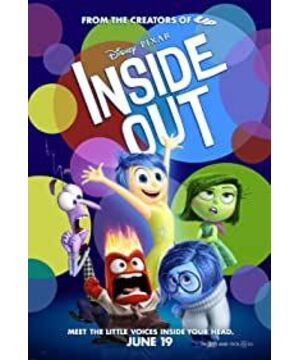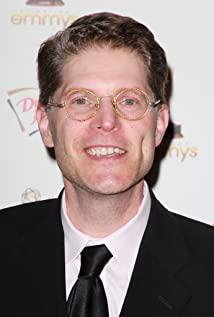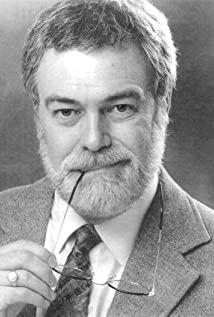One of the core ideas of "Brain Agents", a group of villains in the brain as the control center commander every move, although very novel for most of the audience, is not the first time in history. Before that, there was Woody Allen’s classic work "The Book of Sex" in the 1960s, and later there was the law enforcement robot in the British longevity science-fiction drama "Doctor Who". However, a good idea is not the whole of a good movie. How to combine these The value of creativity is maximized from a unique perspective, and it is the place to see the truth. And this is precisely the charm of "Mind Agents".
This is a story about growth, family, self-awareness, emotions, and emotions. It is an interesting and popular science movie, which perfectly explains how our brain works with images. A psychology student who watches this movie will have a sense of déjà vu of reviewing professional knowledge, and any adult who pays attention to self-growth will see the shadow of her childhood in this little girl named Riley, and see the insights and inspirations. The whole story revolves around the life of the protagonist, Riley. From birth until Riley was eleven years old, the major crisis in the movie was a movie. Because of his father's work, Riley left the city and the hockey team he was familiar with. As the family moved to San Francisco, the difficulties brought about by the new environment made Riley, who had been optimistic and funny since childhood, suddenly become introverted, sensitive, fragile, and angry. Does it sound familiar?
The movie embodies the basic human emotions into five small people, happiness, sadness, fear, disgust, and anger. Happiness is a cheerleader with short golden hair, sadness is little blue glasses with dark lenses, and fear is a purple bamboo pole. Sir, disgust is broccoli. (Did anyone like broccoli when they were a child? I don't like it anyway), and anger is a red flame. Five villains live in the brain's control center and take good care of Riley. The whole story shows all audiences an unconstrained but rigorous and self-consistent world. Under the superficial story of the heroic savior of the happy villains and Riley experiencing growing pains, you can also read many hidden messages from it. That is creation. The values entrained by the readers are private goods.Why do we need to be sad?
Happiness guarantees you a happy life every day, fear keeps you away from danger and keeps you safe, disgust allows you to have a basic aesthetic level, and anger can defend you when you are violated, but sadness? What is the role of grief?
Have you ever asked yourself why you are sad? Humans have evolved for hundreds of thousands of years. Why is the sadness preserved? It makes us cry, makes us depressed and not want to go out, and sometimes even makes us end our lives. Is this an evolutionary loophole? A mistake that needs to be corrected?
This is also the idea of the golden happy cheerleader at the beginning of the film. As the commander of the emotional squad, each villain has his duties, but she doesn’t know what is the use of sadness, and she doesn’t even know why sadness is there. In the mind control center. The audience may also have this question. The blue sadness just sheds tears sadly every day, lying on the ground lamenting, and getting into trouble everywhere. All the golden happy memory balls touched by her will be "contaminated" and turned into blue. into a sad memory. What's the use of sadness?
The classic desire to raise is first suppressed, but the raising of sadness in "Brain Agents" is too high-level. It wasn't until the middle of the film that sadness gradually revealed its role. When the little pink elephant, a good friend of Riley's imagination, was crying because Riley had forgotten himself, no matter how weird and cheerful he was, he couldn't cheer up the little pink elephant and lead the way to the station where he could take the thought train. At this time, sadness walked over, sat beside it, patted it on the back, sighed, and said, "I understand how you feel.
Sometimes, you only need the phrase "I understand how you feel." Understanding is the best ablative for pain.
A psychology paper confirms that unhappy people are generally more empathetic and have better empathy skills than happy people. Experimental data tells us that unhappy people seem to be better able to understand and appreciate the suffering of others. And it is more tolerant.
However, the role of grief goes far beyond that. During a period when the two villains, happiness and sadness, accidentally entered the channel of discarding the memory ball and left the mind control center, Riley, who had lost happiness, became more and more suspicious, and life seemed to collapse little by little. To save Riley, the few remaining villains planted the idea of "running away from home" into the console. Unexpectedly, things became completely out of control. An angry Riley decisively left the house. The console in the center is locked, and all the villains can no longer use the console. Riley has completely lost control, and even the happiness of rushing back to the brain center and the happiness that all the villains give everyone hope is helpless. At such a moment, it was the most useless sadness to turn the tide and reactivate the console. Riley, who was sitting on the bus about to start, suddenly felt sad, shed tears, left the bus, and ran home.
It seems very illogical. Why must it be sad? Why can I only be sad?
If you think this is just a plot that is forced to create characters and develop the plot, then you are underestimating Pixar.
Although the movie is a simplification of real life, the plot is traceable and logical. When Riley's life and emotions fell to the bottom step by step, all the islands of personality collapsed. It can be said that Riley's world has completely collapsed. Maybe not everyone has this experience, but Riley is the film shut down all his emotions and refuses to feel any emotions of his own, whether he is happy, angry, fearful, or disgusted. At this moment, she couldn't stop herself from running away from home, and she completely lost contact with her inner "self". However, sadness, the most useless sadness, sadness that can only cause trouble, is the most powerful emotion. At this time, only sadness can break the blockade of the console, make Riley have emotions again, and make her feel again. To, "self".
Grief is the last line of defense of human nature.
However, this is a fairy tale after all. Happiness finally discovered one of her most cherished happy memories. The fond memories of all her friends and parents with her, but because of Riley's sadness after losing. Happiness said: "They came because of grief." This is more like a good blessing from the creator to the children. When you are sad, there will be relatives and friends with you, and they will come to you because of your grief. Being around makes you happy. It is a setting full of positive energy.
An imperfect world, an imperfect memory, an imperfect self.
At the beginning of the film, Riley was a perfect little girl, honest, kind, positive, optimistic, and funny, bringing happiness to everyone around him and happiness. Family, good friends, good at playing ice hockey. Riley’s world is also perfect. Most of the memory balls are gold that represents happiness. The core memory balls that support Riley’s five individual islands are also golden happiness—memory creates individuality and is another psychology. Basic knowledge. At the end of the day, the emotional little people will input the memory balls (mostly golden representing happiness) produced throughout the day into the long-term memory area for storage. At this time, happiness will say: "Another perfect day! "
But the world is not perfect.
When Riley discovered this, the happiness disappeared, and every newly created memory ball turned into red, purple, blue, and green. There was no happiness alone. Little by little, the golden core memory ball has also changed color. The five individual islands (family, friendship, ice hockey, honesty, etc.) that are supported by happy memories collapse one by one. Riley’s originally beautiful The world fell apart. Until the end of the film, Riley gave up running away and went home crying and telling his parents what he felt. The family sat on the floor and cried together in tears. A new core memory ball was created, and this time, this core memory ball was No longer a single color, for the first time in his life, Riley produced a memory mixed with multiple emotions.
This memory ball, in gold and blue, is both a happy and sad memory. This memory ball has allowed Riley to grow a new island of personality that represents the family, a bigger and more solid island of personality.
This is growth, and growth is collapse, pain, and reconstruction. To grow is to accept an imperfect memory that is not pure gold. It is the first time to understand the mixed feelings. It is to understand that there is happiness and sadness in life. It is to learn to accept sadness like accepting an imperfect self. A stronger self is built on the imperfect memory ball.
The world is not perfect, but it doesn't matter.
Riley has grown up a little bit. At the end of the film, Riley is still the little girl who is happy and funny, has a happy family, can play ice hockey, and has many friends, but is more mature, and has more and bigger islands of personality, and more Rich and therefore unique character. Most of Riley's new memory balls are a mixture of several colors. Before that, a memory ball would change from gold to blue, and memory would change from happiness to sadness, but it was always just a single one. Look It looks beautiful and shiny, but it's an illusion based on the denial of unhappy memories. The new multi-colored memory ball represents that Riley has accepted the complex nature of life and emotions, but she is still a happy little girl and has stronger happiness.
At the end of the film, Happiness said, Riley is eleven years old, what else can be bad? She did not expect that there would be puberty later. But Riley has learned how to deal with his emotions. The five villains coexist peacefully, cooperate seamlessly, and fully accept their Riley. I am afraid that a few individual islands will collapse during adolescence, and they will be based on this. She formed a new island of personality, but there is no doubt that with such a good personality foundation, she can deal with any difficulties on the road in life. Riley in adolescence may be a sequel? I want to know what a story it will be.
What is presented to the audience in the film is far more than the ones mentioned in the article. Dreamworks, subconscious abyss, thought train, abstract thinking, memory warehouse, every plot design shines with wonderful light. For those who are interested, this is a movie that can watch at least two or three times and discover new inspirations. How our emotions affect the communication between people, why the brainwashing divine song is always played in a loop, will you remember a lot of useless things, this is a movie full of information. In the end, for the author, "Mind Agents" used the entire movie to convey such a sweet message:
In your mind, there is a whole world taking care of you.
View more about Inside Out reviews











